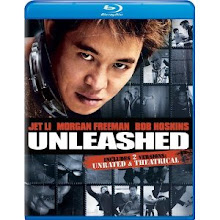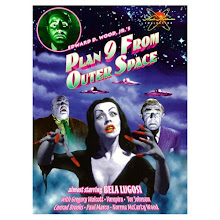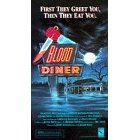by Jason Pyles
Eds. Note: This article originally appeared on another blog on December 23, 2008. I recently asked Andy to take a look at it, and he responded on the post below this one.
Ever since the gangster pictures of the 1930s, there has been considerable debate about the portrayal of violence in film — is it exploitative? — or does it serve a meaningful purpose? It’s such an age-old controversy, many people are altogether weary of the discussion. But I have a different question, though it is related to this topic.
In 1967, Richard Brooks released a film called “In Cold Blood” that is an adaptation of Truman Capote’s novel by the same name. Both tell the grim but true tale of two zeros who planned to rob a Kansas farm family and slaughtered them all in the process. The phrase “senseless deaths” has never been more fitting.
(Interestingly, the film stars Robert Blake as one of the killers; you might remember that around 2002, Blake was arrested for the murder of his second wife but was later acquitted in 2005.)
Relative to the explicit and graphic nature of present-day movies, “In Cold Blood” is tame, perhaps even mild enough for a PG rating — minus the profanity.
But here’s the issue: The film is shot in the actual home of the murdered family. This begs an obvious moral question. What was the merit in shooting the film in their home? The reasons must have pertained to authenticity and perhaps because it’s somewhat intriguing, but are these reasons justified? I suspect that it had less to do with artistic motives and more to do with cashing in on a fascinated nation’s curiosity.
Yet, I can’t help but wonder if the same heinous event befell my family — heaven forbid — how would I feel if Hollywood wanted to tell the story within the walls of our sacred home, where the horrific acts occurred?
In his 1968 review of “In Cold Blood,” Roger Ebert wrote this:
“And every detail of the film, from the physical appearance of the actors to the use of actual locations like the Clutter farmhouse, was chosen to make the film a literal copy of those events. I do not object to this. Men have always learned about themselves by studying the things their fellows do. If mass murders of this sort are possible in American society (and many have been), then perhaps it is useful to see a thoughtful film about one of them.”
My Take:
I’ve heard this argument before, but I don’t buy it. I think it’s imperative for us to realize that monsters exist and such dangers are possible, but to me “In Cold Blood” crosses the line with its shooting location. When I watched “Breakdown” (1997), for example, I thought it a valuable cautionary tale, but it was fictitious; whereas, “In Cold Blood” unfortunately happened. (And regarding violence in film, most people think it’s fun to be scared. Fine. So fictitious horror is one thing, but when we watch the “Saw” movies for their “entertainment value?!,” I think that’s sociologically problematic.)
Please feel free to post comments and discuss this question.
[ Note: I might mention, as a mere afterthought, that we’re probably more familiar with the more recent Philip Seymour Hoffman film, “Capote” (2005), about the journalist and author who followed the story and conducted extensive interviews with one of the killers. ]






























































No comments:
Post a Comment